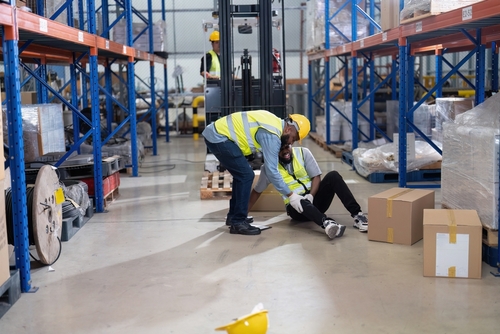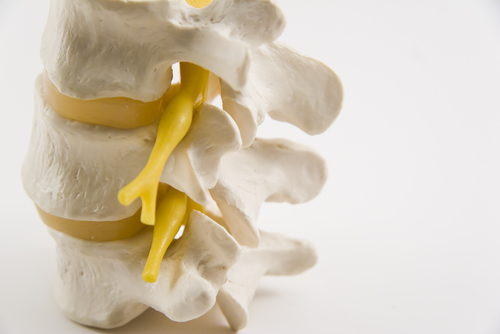
Spinal Cord Injuries: Rehabilitation Strategies and Advances
April 5, 2024
Treatment Options for Scoliosis
June 21, 2024Workplace Hazards to Prevent Occupational Back Injuries

Workplace Hazards to Prevent Occupational Back Injuries
Workplace Hazards to Prevent Occupational Back Injuries. Work-related back injuries are a significant concern in the workplace, impacting the health, well-being, and productivity of employees.
In Singapore, where a large portion of the workforce is engaged in various industries, it’s crucial to recognize and address the hazards that contribute to these injuries.
This article delves into the common workplace hazards associated with occupational back injuries and explores preventive measures to promote a safe working environment.
Table of Contents
Understanding Occupational Back Injuries
Occupational back injuries refer to any injuries or strains that affect the muscles, ligaments, or discs of the back as a result of work-related activities.
These injuries can be caused by various factors, including overexertion from lifting or carrying heavy objects, repetitive movements, and poor ergonomics.
Preventing occupational back injuries is essential not only for the well-being of employees but also for maintaining productivity and reducing healthcare costs.
By addressing workplace hazards and implementing preventive measures, employers can create safer work environments and reduce the risk of injuries.
Identifying Workplace Hazards

Manual Handling and Lifting
Improper lifting techniques and handling of heavy objects pose significant risks to the back.
Employees who frequently engage in manual lifting tasks without proper training or equipment are susceptible to strains, sprains, and other injuries.
Prolonged Sitting or Standing
Workers in sedentary occupations, such as office workers, as well as those who stand for extended periods, such as retail or healthcare workers, are at risk of back injuries.
Prolonged sitting or standing can lead to muscle fatigue, stiffness, and postural issues if ergonomic principles are not followed.
Repetitive Movements
Repetitive movements, such as bending, twisting, or reaching, can strain the back muscles and contribute to musculoskeletal disorders over time.
Poorly designed workstations or tasks that require repetitive motions without adequate rest can increase the risk of back injuries.
Risk Factors in Different Work Environments
Office Settings
In office environments, ergonomic factors play a crucial role in preventing back injuries.
Proper workstation setup, ergonomic chairs, adjustable desks, and regular breaks are essential to promote good posture and reduce strain on the back.
Industrial and Construction Sites
Industrial and construction workers face unique hazards, including heavy machinery operation, exposure to vibration, and working on uneven surfaces.
Employers must provide proper training, personal protective equipment (PPE), and safety protocols to mitigate these risks.
Healthcare and Service Industries
Workers in healthcare and service industries, such as nurses, caregivers, and food service employees, often perform tasks that involve patient handling, lifting, and prolonged standing.
Safe patient handling techniques, ergonomic tools, and supportive footwear can help prevent back injuries in these settings.
Preventive Measures and Best Practices

Training and Education
Comprehensive training on proper lifting techniques, ergonomic principles, and back injury prevention strategies should be provided to all employees. Ongoing education and reinforcement of safety protocols are essential to ensure compliance and effectiveness.
Workplace Ergonomics
Employers should assess workstations and job tasks to identify ergonomic hazards and implement appropriate solutions. This may include adjusting furniture, providing ergonomic tools and equipment, and redesigning work processes to reduce strain on the back.
Personal Protective Equipment (PPE)
In some cases, personal protective equipment such as back support belts or braces may be necessary to provide additional support during physically demanding tasks.
However, PPE should complement other preventive measures and not be relied upon as the sole means of protection.
Promoting a Culture of Safety
Employers play a critical role in fostering a culture of safety by demonstrating leadership commitment to workplace health and safety.
This includes allocating resources for safety initiatives, actively participating in safety programs, and leading by example.
Employees should be encouraged to actively participate in identifying and reporting hazards, as well as suggesting improvements to workplace safety measures.
Creating opportunities for open communication and feedback empowers employees to contribute to a safer work environment.
Monitoring and Review

Regular Workplace Inspections
Periodic workplace inspections should be conducted to identify potential hazards and address them promptly.
Employers, supervisors, and safety committees can collaborate to ensure that safety protocols are being followed and any issues are resolved in a timely manner.
Incident Reporting and Investigation
Incidents involving back injuries or near misses should be reported and investigated to identify root causes and implement corrective actions. Learning from past incidents helps prevent future injuries and improves overall safety practices in the workplace.
FAQ
Are back injuries only common in physically demanding jobs?
No, back injuries can occur in a variety of work settings, including office environments, healthcare facilities, and service industries. Prolonged sitting, poor ergonomics, and repetitive movements can also contribute to back injuries, regardless of the nature of the job.
How can employers encourage employee participation in safety programs?
Employers can promote employee participation in safety programs by providing incentives, recognizing and rewarding safety-conscious behavior, involving employees in safety committees or task forces, and fostering a culture of open communication and collaboration.
What role do ergonomics play in preventing back injuries?
Ergonomics focuses on designing tasks, workstations, and equipment to fit the capabilities and limitations of the human body.
Proper ergonomic design can reduce strain on the back and other musculoskeletal issues by promoting neutral postures, minimizing repetitive movements, and providing adequate support.
What should employees do if they experience back pain or discomfort at work?
Answer: Employees should report any signs of back pain or discomfort to their supervisors or employers immediately.
It’s essential to seek medical attention if the pain persists or worsens.
Additionally, employees can take proactive measures to alleviate back strain, such as adjusting their posture, taking breaks to stretch, and using ergonomic tools or equipment.
Workplace Hazards to Prevent Occupational Back Injuries – Conclusion

Preventing occupational back injuries requires a proactive approach that addresses workplace hazards and promotes a culture of safety.
By identifying and mitigating risks, providing adequate training and resources, and fostering employee engagement, employers can create safer and healthier work environments for all employees in Singapore.
Prioritizing workplace safety not only protects employees from injury but also contributes to increased productivity, morale, and overall business success.
Are you seeking a professional and reliable spine health specialist in Singapore? Contact us today!




